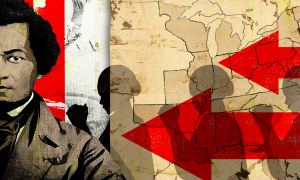text
Informational
Abraham Lincoln & Frederick Douglass: The Story Behind an American Friendship
This text explores the relationship between Frederick Douglass and Abraham Lincoln, two self-made men whose lives intersected near the end of America's Civil War.
July 10, 2017


